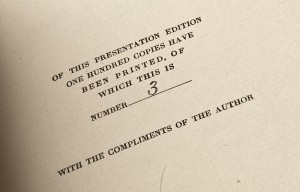Mary Baker Eddy’s poems

Listen to this article
Mary Baker Eddy’s love for verse began when she was a young girl, and she never stopped writing and editing her poetry. We find evidence of this in her copybooks and numerous miscellaneous manuscripts in The Mary Baker Eddy Library’s collections.
One interesting poem from 1846, signed “Mrs. Mary M. Glover,” is “The Emigrant’s Farewell.” In it the speaker discusses the difficulties of leaving the United States to live abroad. While that was not something Eddy ever did, it gives some insight into her thinking at the age of 25. This is the first stanza:
Fiction away—away romance,
Your untaught melody
May wake the lyre when I am hence,
A rover on the sea;
When o’er the white foam dashing high,
Home fading from my sight;
A mother’s tear a sister’s sigh
Shall blanch this faithful cheek.3
After her discovery of Christian Science in 1866, Eddy focused less on writing poetry and more on healing, teaching, speaking, and writing prose. In 1887 she wrote that she “exchanged poetry for Truth.”4 But she still continued to write poems; during her lifetime 55 of her poems were published in The Christian Science Journal and the Christian Science Sentinel. In 1893 she published Christ and Christmas. And in 1897 she included a chapter of her poetry on pages 384–400 of her book Miscellaneous Writings 1883–1896.
In a 1904 letter to William B. Johnson, Eddy wrote, “I want to compile my poetry and put it into a book.”5 Five years later John Mangan contacted her. He was a doctor and amateur historian of Lynn, Massachusetts, where she had lived for much of the 1860s and 1870s. He had located poems that she had published in the local newspapers. In May 1910 Adam H. Dickey, a member of Eddy’s secretarial staff, wrote to Mangan, “Mrs. Eddy is preparing to have some of her poems published, and wishes me to inquire of you if you have sent all of the poems to her that you discovered in the old Lynn papers bearing her signature.6
Dickey soon sent a list of Eddy’s poems and hymns to Allison V. Stewart, who was publisher of her writings at the time. The plan was to publish a poetry book for private distribution only. This “presentation” edition of only 100 copies was bound in cream-colored satin. The title page tells only that it was “Privately Printed 1910.”
By November 1910, however, plans were in place for a more public edition of the book. An article and advertisement in the Sentinel announced:
…a volume of our Leader’s poems is now in press. Many of these have never appeared in our periodicals, and will therefore have a special interest, particularly the opening poem, on the “Old Man of the Mountain” ….7
“The writing of poetry has always been a joy to me,” Eddy once recalled to her student and biographer Irving Tomlinson.8 Truly, her love for verse was constant throughout her life.
- Eddy, Retrospection and Introspection (Boston: The Christian Science Board of Directors), 11.
- Eddy, manuscript, n.d., A11034; Eddy, manuscript, n.d., A11048.
- Mary M. Glover, ”The Emigrant’s Farewell,” The Covenant, May 1846, 215–216.
- Mary Baker G. Eddy, “Mind-Healing History,” The Christian Science Journal, June 1887, 109–118, https://journal.christianscience.com/shared/view/2kt8l3v2tsc?s=t
- Eddy to William B. Johnson, 5 August 1904, L03339.
- Adam H. Dickey to J. J. Mangan, 26 May 1910, L14048.
- Archibald McLellan, “Our Leader’s Poems,” Christian Science Sentinel, 5 November 1910, http://sentinel.christianscience.com/shared/view/218l77rttae?s=t
- Irving C. Tomlinson, n.d., A11788.



